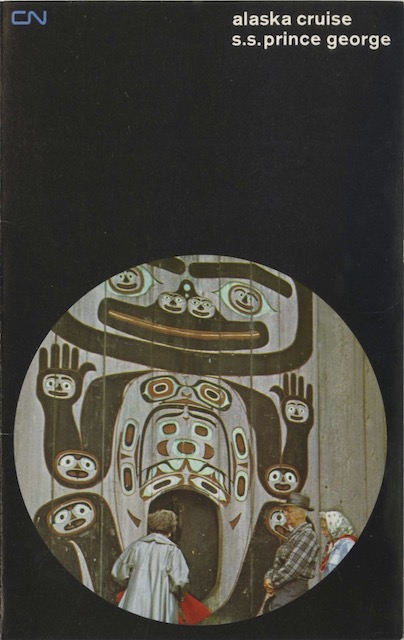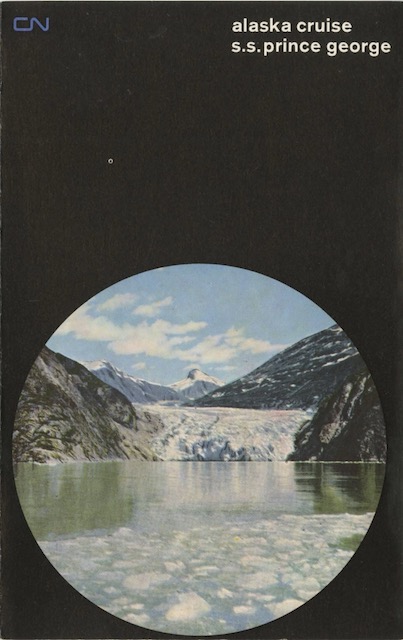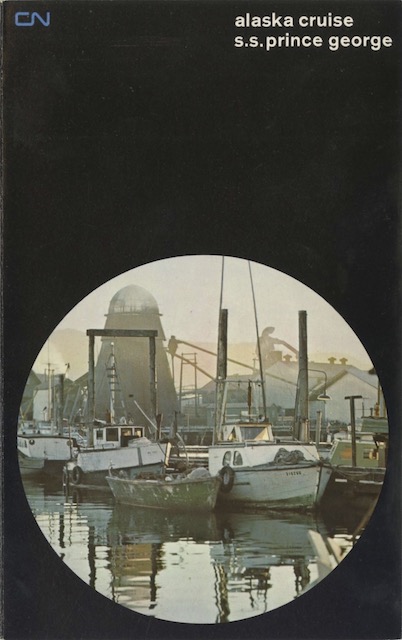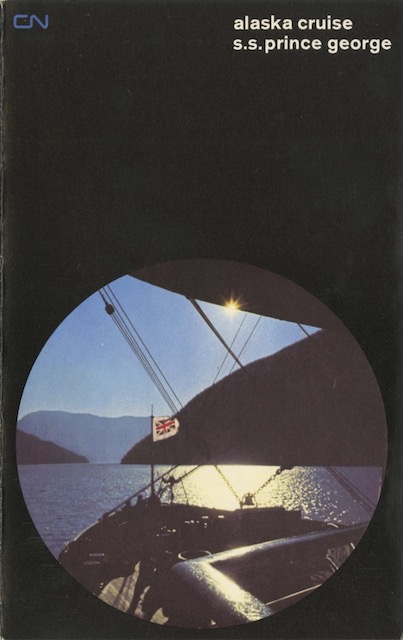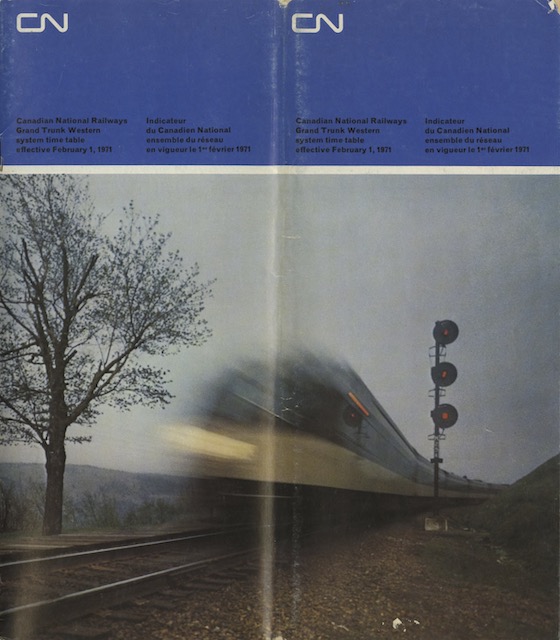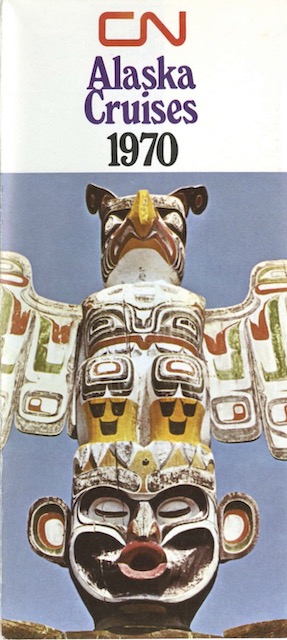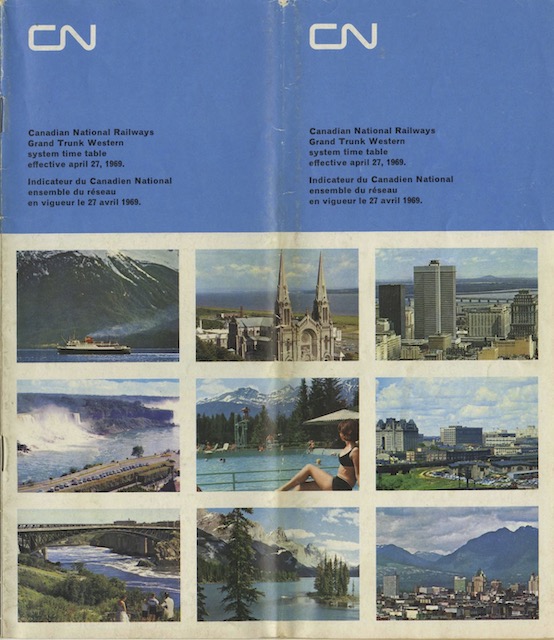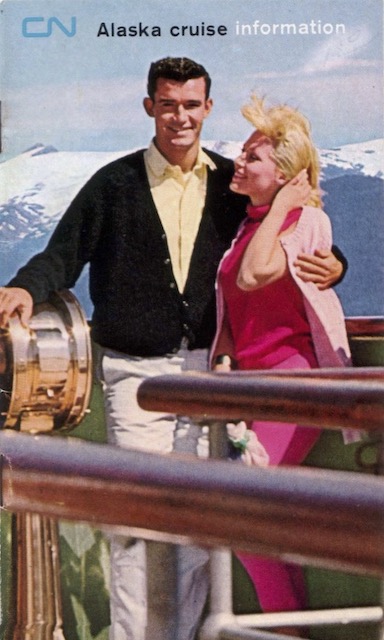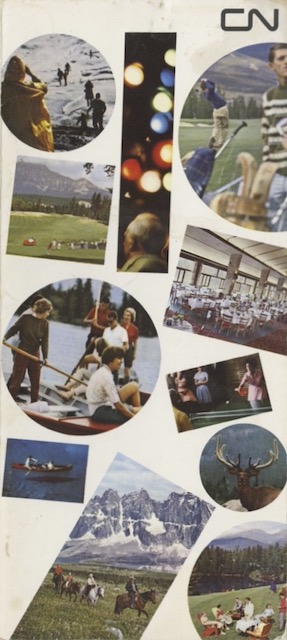We’ve seen this menu cover before in a 1964 edition. Today’s is dated July 5, 1971, but both are identified as “gala dinners.” I’m still a bit ignorant about steamship cruises, so all I really know about gala dinners is that people dressed up just a little fancier than at regular steamship dinners, which in this case apparently meant silly hats. For some reason, the circle on the back where a photo would normally be shown, is blank on both gala menus.
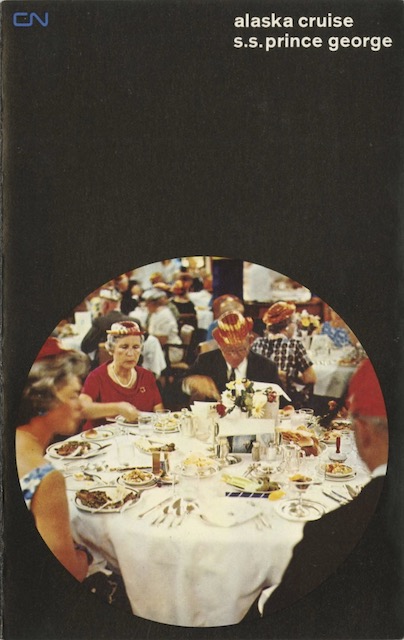 Click image to download a 726-KB PDF of this menu.
Click image to download a 726-KB PDF of this menu.
On July 5, the Prince George was scheduled to arrive at Prince Rupert at 1:00 pm, departing at 4:30 pm. Prince Rupert is the one city on this cruise that I’ve never visited. While it is mainly a transshipment point for Canadian National freight trains and ocean freighters, I’m sure it has its share of shops designed to separate tourists from their money. Continue reading

